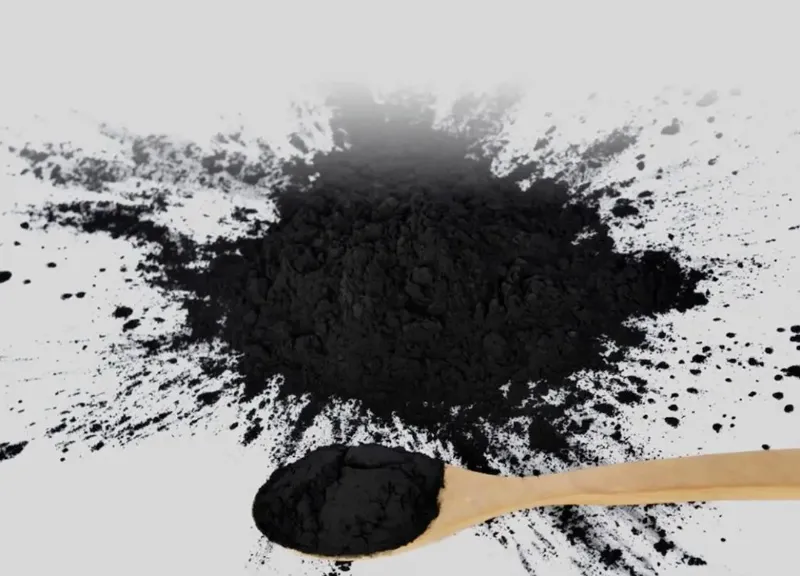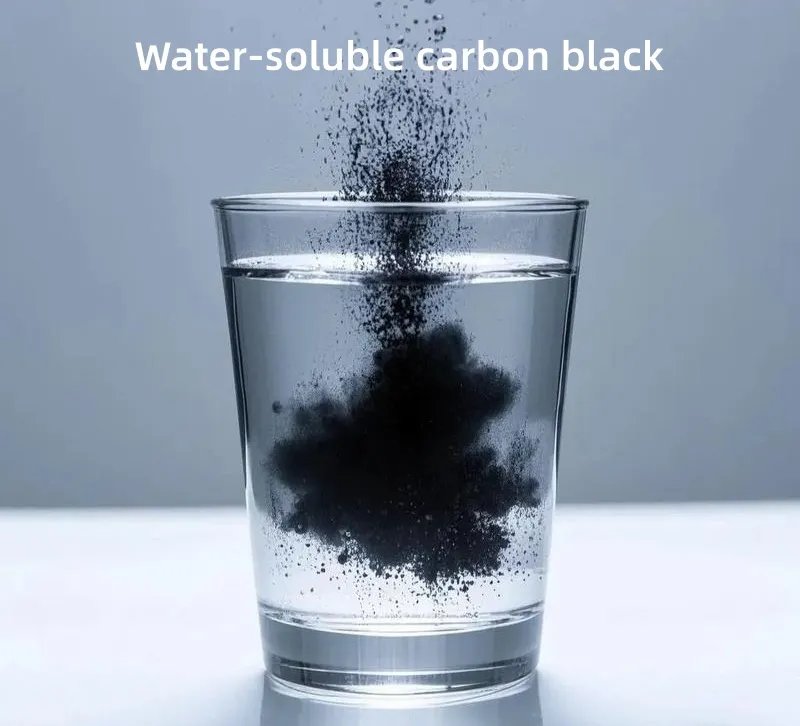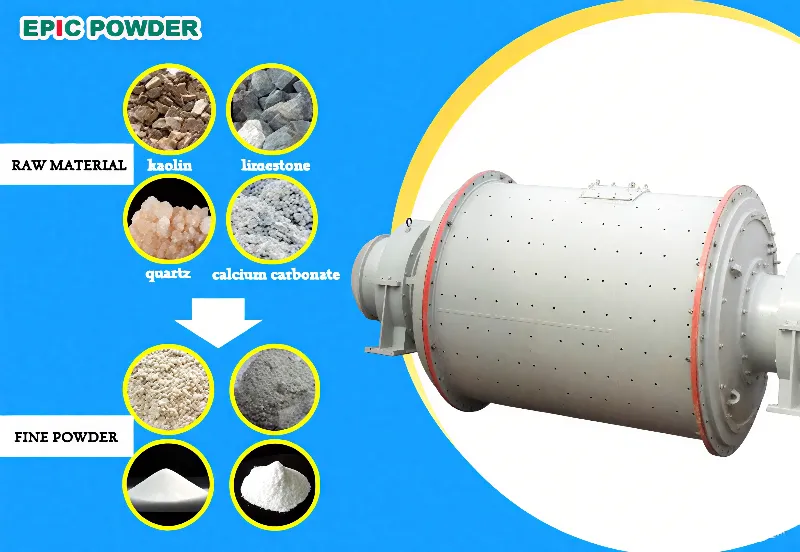Het verbeteren van de hydrofiliteit van carbon zwart Poederdeeltjes zijn essentieel voor het verbeteren van hun dispersiestabiliteit in water en het vergroten van de compatibiliteit met polaire media. Dit is cruciaal in sectoren zoals coatings, inkten en rubbercomposieten.

Oppervlaktechemie Wijziging
Oxidatiemodificatie
- Gasfase-oxidatie:Ozon-, zuurstof- of plasmabehandeling wordt gebruikt om zuurstofbevattende functionele groepen (zoals carboxyl- en hydroxylgroepen) op de carbon zwart oppervlak. Zuurstofplasmabehandeling verhoogt bijvoorbeeld het zuurstofgehalte op het oppervlak aanzienlijk, verkleint de contacthoek tot onder de 40° en verbetert de dispersiestabiliteit.
- Vloeistoffase-oxidatie: Er worden oxidatiemiddelen zoals salpeterzuur en waterstofperoxide gebruikt. Salpeterzuuroxidatie (10%-concentratie bij 70 °C gedurende 3 uur) verwijdert effectief organische stoffen van het oppervlak en verbetert de hydrofiliteit.
- Anodische oxidatie/plasma-oxidatie: Versnelt oxidatiereacties in een elektrisch veld en verhoogt de efficiëntie met meer dan 30% in vergelijking met traditionele methoden. Temperatuurregeling is echter noodzakelijk om overmatige oxidatie en ontleding van zuurstofhoudende groepen te voorkomen.

Entmodificatie
- Enten met polyacrylzuur: Bij pH=3 verbetert de dispersiestabiliteit van koolstofzwart in water met 50% bij gebruik van 0,5% ammoniumpersulfaat-initiator gedurende 2 uur.
- Copolymeren met sulfonzuurgroepen (zoals natrium-2-acrylamido-2-methylpropaansulfonaat):Introduceert sterke hydrofiele groepen om de verspreiding door elektrostatische afstoting te verbeteren.
- Vrije-radicalenpolymerisatie-enting:Onder invloed van ultrasone straling worden hydrofiele polymeren (zoals polyacrylzuur en natriumpolystyreensulfonaat) op het koolstofzwarte oppervlak geënt.
- Kam-achtige copolymeer enting: Gebruikt natriumpolyethyleensulfonaat (PSS) om te adsorberen aan het roetoppervlak door middel van π-π-conjugatie, gevolgd door 12 uur malen in een kogelmolen. De resulterende roetdispersie is stabiel en geschikt voor nat mengen van rubber.
Fysische coating en dispergeermiddel Wijziging
Polymeer Coating
- Micro-emulsie polymerisatie coating: Zo worden bijvoorbeeld polyethyleenglycolderivaten of anionische oppervlakteactieve stoffen (zoals AKN-2290) gebruikt om het roetpoeder te coaten. De massaverhouding van roet tot oppervlakteactieve stof is 1:0,05–1, en door de hogesnelheidsafschuiving ontstaat een hydrofiele schil.
- Fase-scheidingscoating:Hydrofoob koolstofzwart wordt door middel van zelfassemblage van de interface bedekt met hydrofiele polymeren (zoals polyvinylalcohol), waardoor een kern-schilstructuur met een activeringsefficiëntie van >95% ontstaat.
Dispergeermiddeltoepassing
- Anionische/niet-ionische oppervlakteactieve stoffenVoorbeelden hiervan zijn natriumdodecylsulfaat en de O-serie (O-10 tot O-35). Deze verlagen de oppervlaktespanning van roet, waardoor de bevochtigbaarheid verbetert.
- Silane-koppelingsmiddelen: Voorbeelden zoals Si-69 (TESPT), dat doorgaans wordt gebruikt voor wit roet, het roetpoeder modificeren door hydrofobe groepen te combineren met het roet en hydrofiele groepen bloot te leggen, hoewel dit proces duurder is.
Procesoptimalisatie en hulptechnieken
Mechanisch-Chemisch Behandeling

- Kogelmalen activering: Kogelmalen van carbon black met natriumpolystyreensulfonaat (PSS) gedurende 12 uur. De mechanische kracht breekt aggregaten af, terwijl PSS de hydrofiliteit verbetert door π-π-adsorptie. Deze methode is ideaal voor natuurrubbercomposieten.
- Ultrasone bestraling: Verkort de entreactietijd met 50%, verlaagt het energieverbruik en voorkomt groepsontleding door overmatige hitte.
Plasmabehandeling
- Zuurstofplasmabehandeling onder vacuümomstandigheden verhoogt het aantal zuurstoffunctionele groepen aan het oppervlak binnen 5 minuten, waardoor de dispersie (D-waarde) van 30% wordt verbeterd, zonder dat er vervuilende stoffen worden gegenereerd.
Zout-geïnduceerde assemblage
- Het toevoegen van sporenkationen (zoals Li⁺ of Na⁺) verbetert de grensvlakaffiniteit tussen roet en water door kation-π-interacties. Het contacthoekhysterese-effect is significant, waardoor het geschikt is voor systemen op waterbasis.
Toepassingsverificatie en prestatie-optimalisatie
- Rubbercomposieten:Hydrofiele koolstofzwarte stof verbetert bij gebruik bij het mengen van latex de scheursterkte met 40% en verbetert de uniformiteit van de vulstofdispersie aanzienlijk.
- Inkten/coatings op waterbasis: Met polyacrylzuur geënt koolstofzwart verbetert deeltjesgrootte stabiliteit, waardoor verstopping tijdens inkjetprinten wordt verminderd.
- Milieuoverwegingen: Gesloten granulatiesystemen in combinatie met uitlaatgasrecuperatie verminderen de stofemissies met ruim 90%.
Conclusie
De kern van het verbeteren van de hydrofiliteit van roetpoeder ligt in het introduceren van polaire functionele groepen en het verbeteren van sterische hindering. Voor scenario's met lage kosten heeft oxidatiemodificatie (oxidatie met salpeterzuur in vloeibare fase) of oppervlakteactieve coating de voorkeur. Voor hoge prestatie-eisen is ultrasoon ondersteunde enting met polyacrylzuur of kamvormige copolymeren, in combinatie met kogelmalen, ideaal. Voor groene processen biedt zuurstofplasmabehandeling in combinatie met Si-69-koppelingsmiddelen zowel efficiëntie- als milieuvoordelen.
